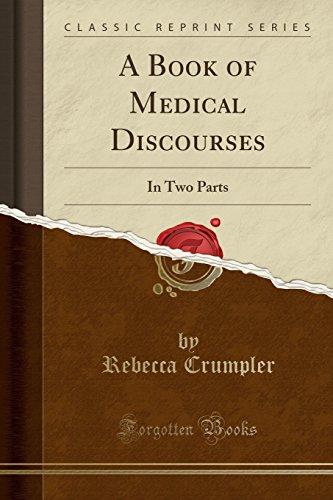History never ceases to amaze me. For example —
In 1883, a 145-page volume entitled A Book of Medical Discourses in Two Parts was published. Its appearance was significant for two reasons. It was one of the first American medical guides to offer advice for women and children, including a bit of marital advice. More importantly, it was the masterwork of Dr. Rebecca Lee Crumpler, the first Black woman in the United States to earn a medical degree.

Unfortunately, few photographs of Dr. Crumpler survive, and what is known about her life comes mostly from what she wrote about herself. Born in 1831, she says she was raised by a “kind aunt in Pennsylvania” who cared for sick neighbors, which created her interest in medicine. Crumpler moved to Charlestown, Massachusetts, when she was 21 to work as a nurse for eight years. Then she decided to attend the New England Female Medical College, which was a part of the New England Hospital for Women and Children. The medical college had accepted its first class of 12 women in 1850, a very controversial move at the time.
Crumpler was accepted in 1860. Four years later, she received what she described as her “degree of doctress of medicine,” becoming the school’s first and only Black graduate, since it closed in 1873. This was a remarkable accomplishment for that era — of the 54,543 physicians in the U.S. in 1860, only 300 were women, and none of them were Black. But remember this was the era of the Civil War, fortuitous timing for an ambitious Black woman.
James Downs, a professor of history at Connecticut College, called the Civil War “the largest biological catastrophe of the 19th century. More soldiers died from disease than from battle or even battlefield wounds.” According to the Library of Congress, it was even worse for African-Americans in uniform — 29,000 of the 100,000 Black soldiers serving in the Civil War died from disease, about nine times more than died fighting. And there was little improvement for Blacks after the war, as Professor Downs recorded in Sick from Freedom: African-American Illness and Suffering During the Civil War and Reconstruction. The war left millions of African-Americans without adequate shelter, food or access to medical care; it was the downside of emancipation. Only about 80 doctors and a dozen hospitals were available to treat more than four million freed slaves in the fall of 1865. What was available was grossly underfunded — most of the hospitals run by the federal government’s Freedmen’s Bureau could treat no more than 20 patients at a time.
As one of the few Black women employed by Freedmen’s Bureau, Dr. Crumpler did as much as she could, leaving Boston for Richmond, Virginia to treat freed slaves. In addition, this field experience provided “ample opportunities to become acquainted with the diseases of women and children.”
Crumpler returned to Boston in 1869 to treat poor women and children from her home before turning her attention to writing her comprehensive Book of Medical Discourses. “What makes Crumpler’s work particularly powerful,” says Professor Downs, was not just how it grew out of her own experiences, but how “she frames her book as a more general study on womanhood and does not follow the traditional practice of segregating Black women and their children’s health as separate from White women’s health.”
Dr. Crumpler’s book was not only historic but also invaluably useful, not to mention inspirational. “Her mere presence in the annals of history challenges how many imagine the past,” says Professor Downs. “It undermines a racial ideology that persists today by presenting Black achievement in medicine as surprising and new.”
Taken from “The Trailblazing Black Female Doctor That American History Forgot” by Sean Braswell (https://www.ozy.com/flashback/the-trailblazing-black-female-doctor-that-american-history-forgot/92708?). The photo is of a “classic reprint” as listed on AbeBooks.com (https://www.abebooks.com/Book-Medical-Discourses-Two-Parts-Classic/30078042223/bd?).
